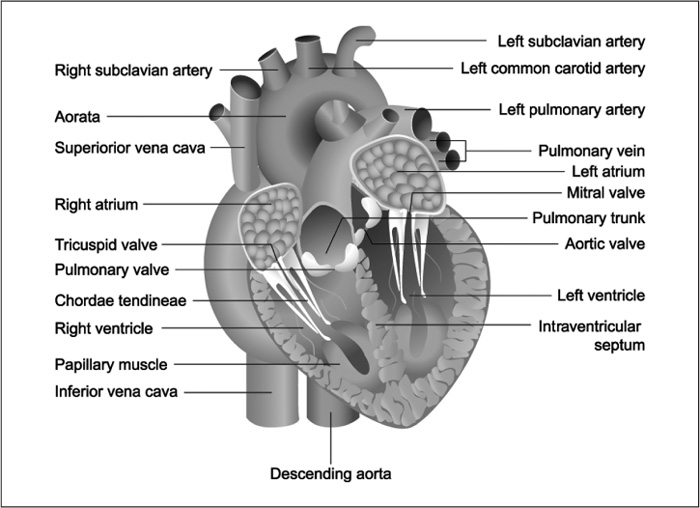Anatomy: Animals InsideCirculatory System |
How does the human heart work? |
The human heart—actually a muscle that is located beneath the sternum, or the upper left side of a person’s torso—is about the size of a clenched fist. On the average, the human heart beats about seventy to seventy-five times per minute (resting) and pumps about five quarts (just over five liters) of blood per minute. Within the heart, two atria receive blood from the body cells, while two ventricles pump blood out of the heart.

The remarkable muscle in your chest known as the heart (cross section shown above) has four chambers—two ventricles and two atria—that work non-stop to pump blood through your body.
